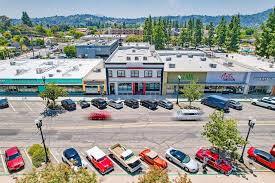The 360 cameras has seen a remarkable transformation over the past few decades. From the early days of film to the dominance of digital photography, advancements in technology have continually expanded the boundaries of what is possible. Among the latest innovations is the 360-degree camera, a device that has revolutionized how we capture and experience

What are the 360 degree Cameras?
360 cameras is a device equipped with multiple lenses to capture an entire scene around it, creating a spherical image or video. Unlike traditional cameras that only capture what is in front of the lens, with the help these we record everything in their surroundings, allowing viewers to explore an image from every angle as if they were standing in the middle of the scene.
This immersive technology has found its way into various applications, from virtual reality (VR) and social media to real estate and tourism. Whether you’re capturing a panoramic view of a breathtaking landscape or creating an interactive tour of a property, these cameras offer a level of engagement that traditional photography simply can’t match.

How Do 360 Cameras Work?
360 cameras typically uses two or more wide-angle lenses that capture overlapping fields of view. the 360 camera images are then stitched together by the camera’s software to create a seamless 360-degree image or video. Some advanced models even use artificial intelligence (AI) to enhance the stitching process, ensuring that the final product is smooth and free of distortions. 360 cameras are user-friendly, often with a single button to start recording. Once captured, the content can be viewed on various platforms, including VR headsets, smartphones, and computers. This ease of use has made 360 cameras popular among both professionals and hobbyists.
Applications of 360 Cameras
The evolution of 360 cameras has led to their adoption in a wide range of industries. Here are a few notable examples:
- Virtual Reality (VR): these cameras are a cornerstone of VR content creation. By capturing an environment in 360 degrees, they enable users to experience a space as if they were physically present, making it perfect for gaming, education, and virtual tours.
- Real Estate: Real estate agents use these cameras to create virtual tours of properties. This allows potential buyers to explore a home from the comfort of their own devices, offering a more comprehensive view than traditional photos.
- Tourism and Travel: Travelers can use these cameras to capture and share their experiences in a way that standard photos can’t convey. These immersive images allow others to feel as though they are part of the adventure.
- Social Media: Platforms like Facebook and YouTube support 360-degree content, enabling users to share interactive experiences with their followers. This has become a popular way for influencers and brands to engage their audiences.
- Filmmaking: In the world of cinema, these cameras are being used to create immersive experiences that draw viewers deeper into the story. While still in its early stages, this technology has the potential to change how films are made and consumed.
Challenges and Limitations of 360 cameras
Despite their many advantages, these cameras are not without their challenges. One of the primary issues is image quality. Because these cameras capture such a wide field of view, the resolution of each part of the image can be lower compared to traditional cameras. This can result in less detail, especially when zooming in. Another challenge is the stitching process. While most cameras do an excellent job of stitching images together, there can still be noticeable seams or distortions, particularly in complex scenes. Lighting conditions can also pose a problem, as the camera needs to balance exposure across a 360-degree environment.

The Future of 360 Cameras
The future of these cameras is bright, with ongoing advancements aimed at overcoming current limitations. Improvements in sensor technology, AI-powered stitching, and higher resolutions are all on the horizon, promising even more immersive and detailed 360-degree content. As VR and augmented reality (AR) technologies continue to grow, the demand for 360-degree content will likely increase, pushing the development of these cameras further. Additionally, as social media platforms evolve to support more interactive content, 360 cameras could become a standard tool for content creators.
conclusion
The evolution of 360 cameras represent a significant leap forward in photography and videography. They offer a new way to capture and experience the world, opening up endless possibilities for creativity and storytelling. While there are challenges to overcome, the potential of 360 cameras is undeniable, and they are set to play a key role in the future of visual content.
Leave a Reply